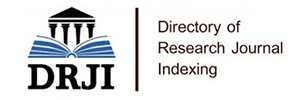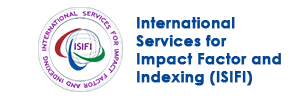
Journal Basic Info
**Impact Factor calculated based on Google Scholar Citations. Please contact us for any more details.Major Scope
- Stomach Cancer
- Cervical Cancer
- Sarcomas
- Chemotherapy and Radiotherapy
- Radiation Therapy
- Surgical Oncology
- Colorectal Cancer
- Gynecological Cancers
Abstract
Citation: Clin Oncol. 2017;2(1):1241.DOI: 10.25107/2474-1663.1241
The Evaluation of Dyspnea in Elderly Patients with Advanced Non-Small-Cell-Lung Cancer Receiving Palliative Chemotherapy
Bozena Weryńska, Irena Porębska and Anna Brzecka
Department of Pulmonology and Lung Cancer, Medical University, Wroclaw, Poland
*Correspondance to: Irena Por?bska
PDF Full Text Research Article | Open Access
Abstract:
Background: Therapeutic decisions in lung cancer patients are in great part based on ECOG performance status. Little is known, however, what is the relation between dyspnea and ECOG performance status. The aim of the study was to elucidate to what extent dyspnea influences ECOG performance status in the elderly patients with the with advanced Non-Small Cell Lung Cancer (NSCLC) and whether dyspnea may be considered as a factor influencing the results of palliative chemotherapy.Material and
Methods: Material of the study consisted of 27 patients aged over 65 years with advanced NSCLC scheduled for the first-line palliative chemotherapy. The following studies were performed: spirometry, Modified Medical Research Council (mMRC) questionnaire, Six Minutes Walk Test (6MWT), Borg dyspnea scale, and COPD Assessment Test (CAT). After removing from CAT 3 items not related to dyspnea (cough, phlegm and sleep), the remaining 5 questions were analyzed as modified CAT, i.e. mCAT.Results: Dyspnea was a complaint of 78% of patients. The patients with ECOG 1/ECOG 2 performance status had higher mMRC and CAT scores than the patients with ECOG 0 performance status. mCAT score was almost 2.5 times higher in the patients with ECOG 1/ECOG 2 than in the patients with ECOG 0 performance status (13.0 ± 5.1 vs. 5.1 ± 5.1, p <0.001). Score of mCAT positively correlated with the score in mMRC scale (r = 0.68, p <0.05) and Borg scale at rest (r=0.390, p <0.05) and negatively correlated with the distance in the 6MWT (r = -0.56, p <0.05). Non-completion of chemotherapy was associated with smaller FEV1 and FVC, shorter distance in 6MWT and more severe dyspnea in the Borg scale.Conclusion: Dyspnea is a complaint of the majority of elderly patients with advanced NSCLC patients and is more severe in the patients with the performance status higher than ECOG 0. 6MWT and modified CAT are the best tools to evaluate dyspnea in the elderly patients with advanced NSCLC. The evaluation of dyspnea may help to assess the performance status in the elderly patients with advanced NSCLC. Objective measure of dyspnea, i.e. shortened distance in 6MWT, may allow to predict unfavorable course of the palliative chemotherapy in the elderly patients with advanced NSCLC.
Keywords:
Lung cancer; Dyspnea; Performance status; CAT; mMRC; Six-minutes-test walk
Cite the Article:
Wery?ska B, Por?bska I, Brzecka A. The Evaluation of Dyspnea in Elderly Patients with Advanced Non-Small- Cell-Lung Cancer Receiving Palliative Chemotherapy. Clin Oncol. 2017; 2: 1241.













